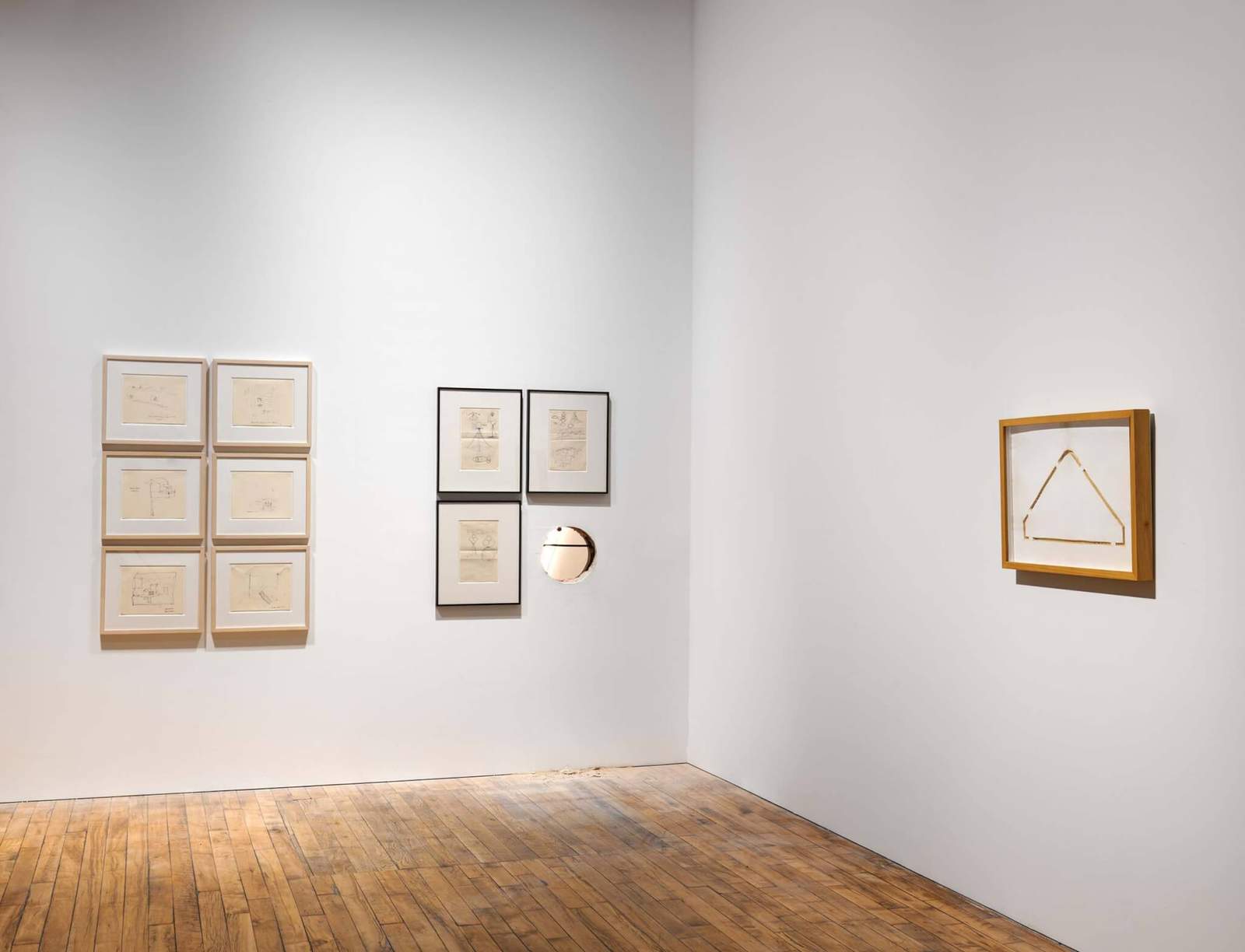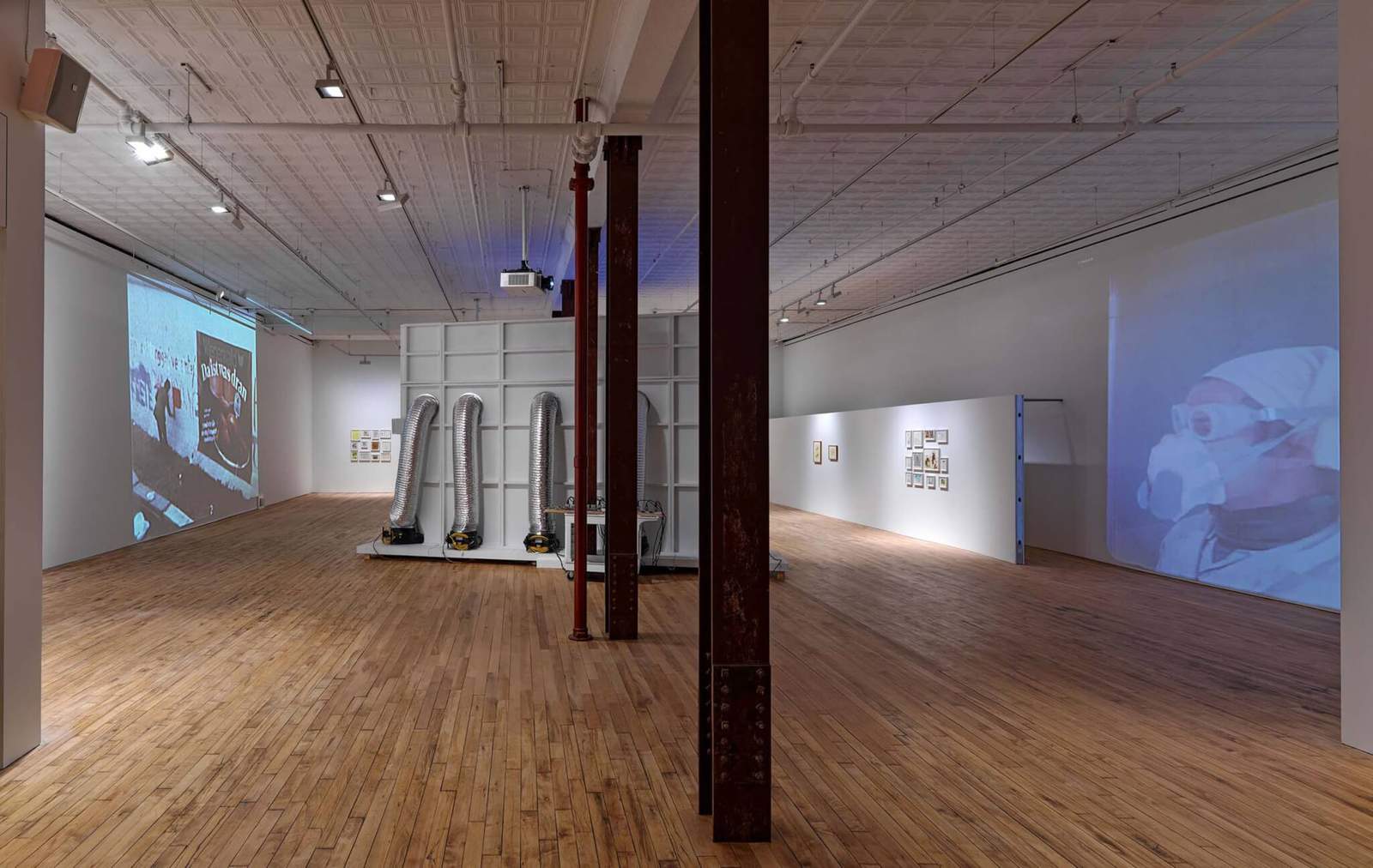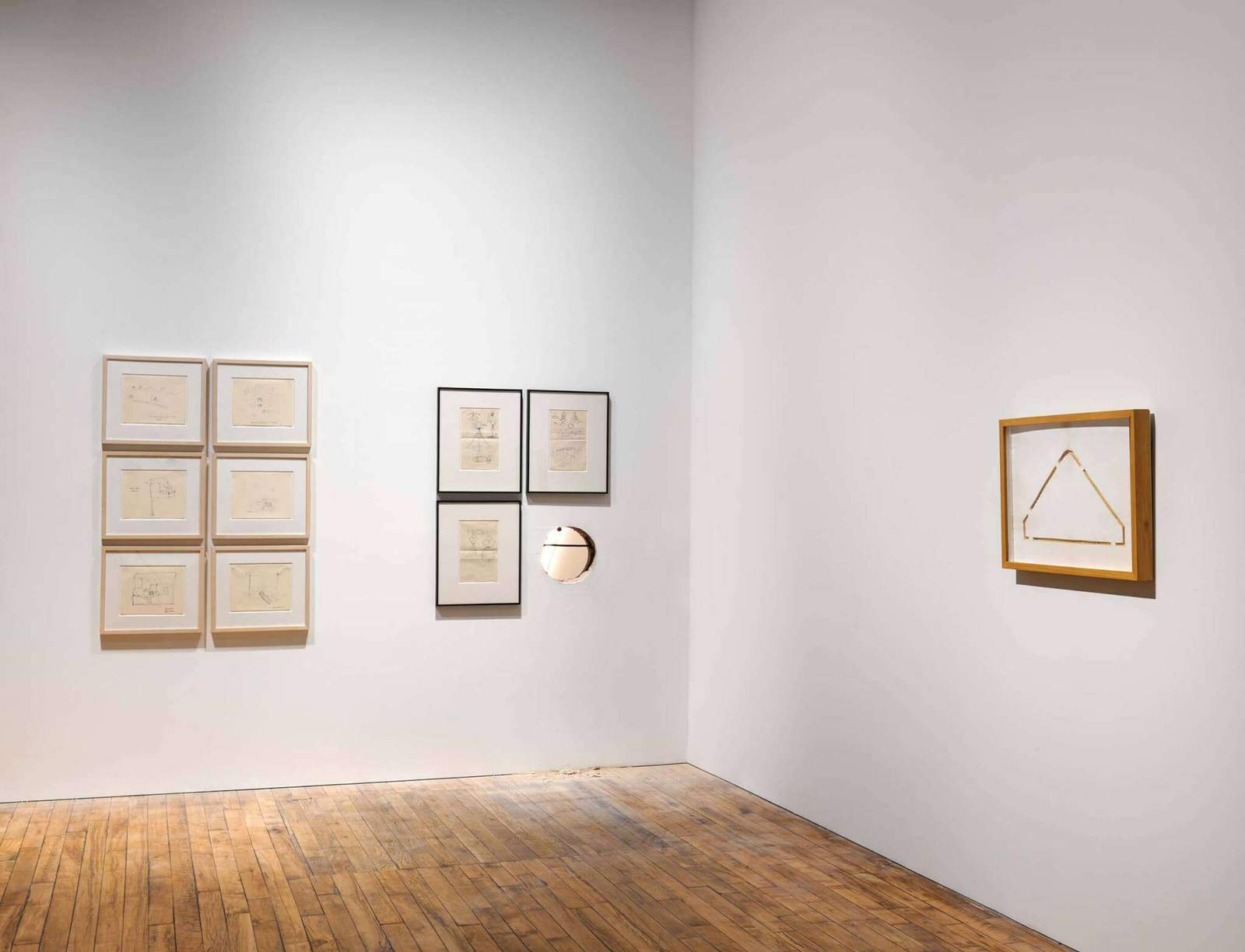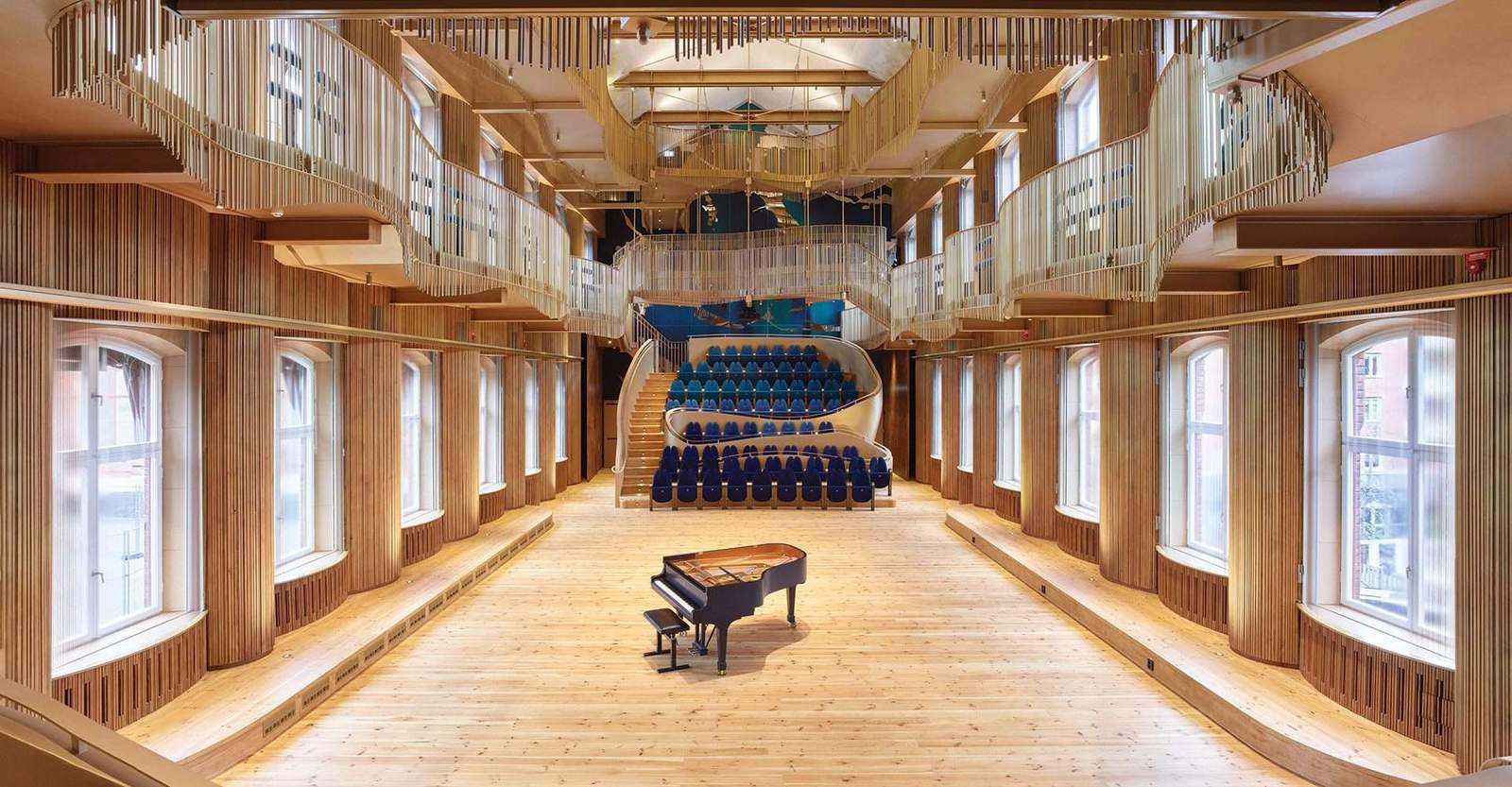You hear it before you see it: material wrestling, things falling apart, the determined groan of industry. And then, before you open 52 Walker’s massive interior door, you might catch a glimpse through the wall, where a hole has been emptied-out, of the kinds of things people get up to inside.
Gordon Matta-Clark & Pope.L: Impossible Failures, 52 Walker’s blockbuster late-winter show, which closed earlier this month, built a bridge between two interdisciplinary artists and then knocked it down. Curator Ebony L. Haynes cleverly overlaid a few of Matta-Clark’s signature punctures—iterations of those massive openings he blew into West Side warehouses, here scaled down to small circles somewhere between portal and peephole—with projections of the films he made to document their making. For 1975’s Conical Intersect, he broke through condemned 17th-century Parisian buildings to show, at levels both anatomical and poetic, what would be lost with their demolition. The previous year’s Bingo x Ninths took a similarly destructive approach to domesticity: first, he carefully, ruthlessly divorced an intact house in honeymoon fantasyland Niagara Falls into nine separate parts; then, the house was demolished by a previous engagement. What makes a house a home, anyway?

It’s hard to turn from these films, with their money shots of plaster dust pluming among packs of erect wood planks and rebar, the great crashes of walls giving up their ghosts. But Pope.L’s Failure Drawings, which hung interspersed with Matta-Clark’s own illustrations of wildly, intentionally preposterous architectural schemes, offer good reasons to wrest your gaze from the uproar. Best known for durational performance work that requires his body to crawl across busy city streets, Pope.L’s drawings explore different kinds of traveling. Made on the move, the drawings transform hotel stationary and bits of newspaper into maps of distant or imaginary lands. Worms appear in many of them, sometimes acting like a sort of Greek chorus in commentary of the landscape and sometimes signaling where all this commotion inevitably ends up, expired and underground.

The undeniable anchor of the show, though, was Pope.L’s Vigilance a.k.a Dust Room (2023), a big box in the back. On a table before it, tens of power cords plugged into chunky outlets. A sign was duct-taped between them, written in red blocky letters: DANGER! DO NOT OPERATE THIS DUST ROOM! NOT READY FOR SAFETY. And yet, if not safely, the room stood ready. Thick air ducts penetrated its white walls; a terrifying din pierced the ears. Likely, this, and not Matta-Clark’s efforts, was what you heard on the street. There was a small window set into one wall as if this was any old building. Peer in, though, a world of spectacular horror showed itself. Drifts of dirt blizzarded the air, like an infernal snowglobe. All surfaces were mirrored, like a Kusama installation. Lights were dim, but it was almost impossible not to see yourself lost in there, wandering and coughing and failing to find purchase. Its alienation was deeply bodied, out of time but of history. There were memories of the air around the fallen twin towers in there, of cocaine disco nightmares, of star-crossed science fiction. But staring obliterates distinction: to see it was to be in it.

And in this way, Pope.L’s work inverts the excavation of Matta-Clark. In 2002, Pope.L showed a piece called Hole Theory at MoMA, based on his book by the same name. A voice spills out of from a wall’s hollow: “When I say holes are conduits,” Pope.L said, “a means to, or space, or intersection. I mean holes are occasions, opportunities.” Impossible Failures showed possible successes, as Pope.L didn’t fill in Matta-Clark’s cavities, per se, but saw them as fillable—even if what contains them might be the unthinkable.
Jesse Dorris is a writer in New York City and host of Polyglot, a show on WFMU.




